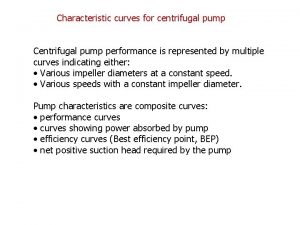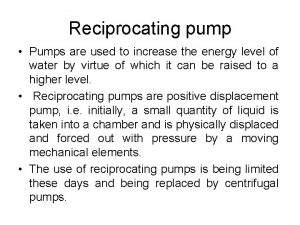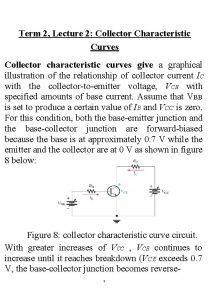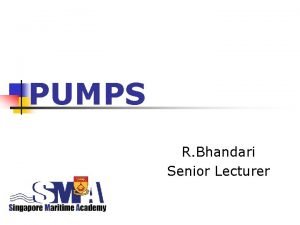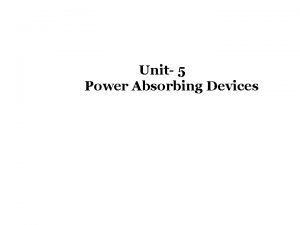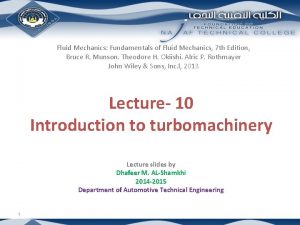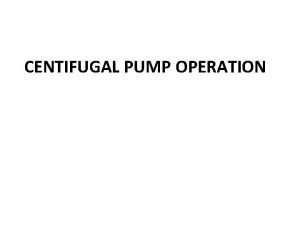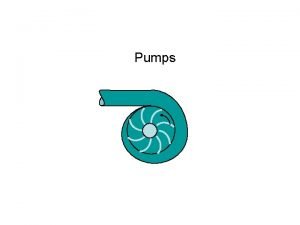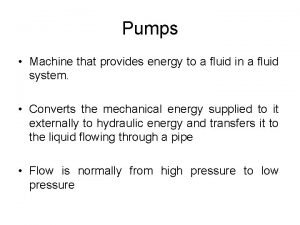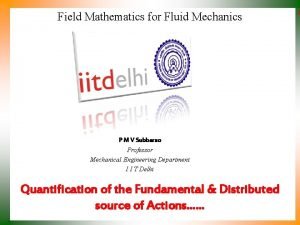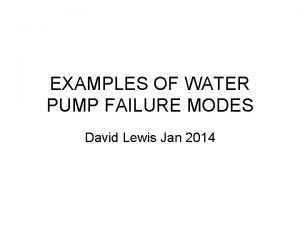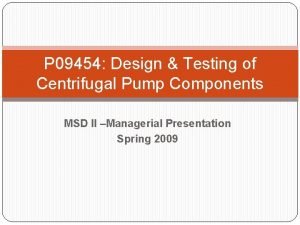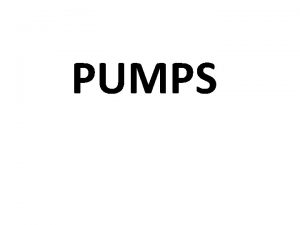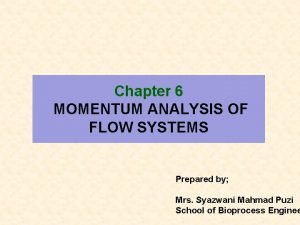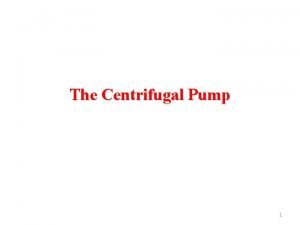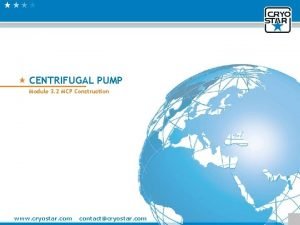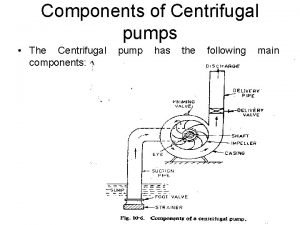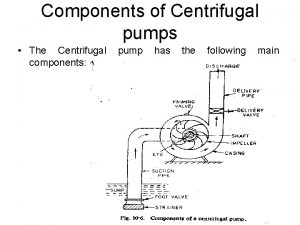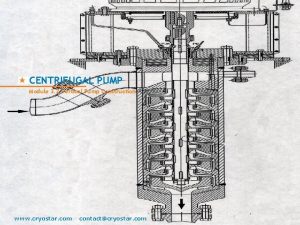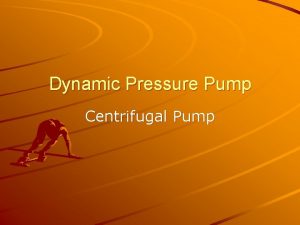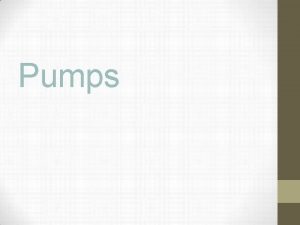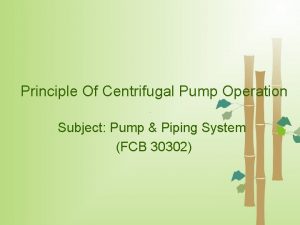Characteristic curves for centrifugal pump Centrifugal pump performance














- Slides: 14

Characteristic curves for centrifugal pump Centrifugal pump performance is represented by multiple curves indicating either: • Various impeller diameters at a constant speed. • Various speeds with a constant impeller diameter. Pump characteristics are composite curves: • performance curves • curves showing power absorbed by pump • efficiency curves (Best efficiency point, BEP) • net positive suction head required by the pump

Characteristic curves for centrifugal pump


1. 2. 3. 4. Maximum recommended head. Minimum recommended flow. Maximum recommended flow.

"BEP" - Best Efficiency Point is not only the operating point of highest efficiency but also the point where velocity and therefore pressure is equal around the impeller and volute. As the operating point moves away from the Best Efficiency Point, the velocity changes, which changes the pressure acting on one side of the impeller. This uneven pressure on the impeller results in excess load, and reduces the service life. Outside the operating range cavitation can be created. The actual system curve may cross the pump curve inside the recommended operating range.

System curve or system characteristics Head – flow rate function In general the pump has to supply enough energy to: • lift water through a certain height – the static height Hs • overcome losses dependent on the discharge, Q. Thus the system head is: Typically, losses (whether frictional or due to pipe fittings) are proportional to Q 2, so that the system characteristic is often quadratic:


Duty Point The pump operates at a duty point (or operating point) where the head supplied by the pump precisely matches the head requirements of the system at the same discharge; i. e. where the pump and system H-Q characteristics intersect. The pump can not develop pressure unless the system creates backpressure (ie: static, and /or friction loss).

Example A water pump was tested at a rotation rate of 1500 rpm. The following data was obtained. (Q is quantity of flow, H is head of water, h is efficiency). It is proposed to used this pump to draw water from an open sump to an elevation 5. 5 m above. The delivery pipe is 20. 0 m long and 100 mm diameter, and has a friction factor of 0. 02. If operating at 1500 rpm, find: (a) the discharge that the pump can provide; (b) the pump efficiency at this discharge; (c) the input power required.

Affinity laws Relationships for the estimation of changes in pump performance as a result of a change in one of the basic pump parameters, e. g. shaft speed and impeller diameter.

Affinity laws Law 1. With impeller diameter (D) held constant: Law 1 a. Flow is proportional to shaft speed: Law 1 b. Pressure or Head is proportional to the square of shaft speed: Law 1 c. Power is proportional to the cube of shaft speed:

Affinity laws Law 2. With shaft speed (N) held constant: Law 2 a. Flow is proportional to the impeller diameter : Law 2 b. Pressure or Head is proportional to the square of the impeller diameter : Law 2 c. Power is proportional to the cube of the impeller diameter :

Pumps in parallel Same head: H Add the discharges: Q 1 + Q 2 Advantages of pumps in parallel are: • high capacity: permits a large total discharge; • flexibility: pumps can be brought in and out of service if the required discharge varies • redundancy: pumping can continue if one is not operating due to failure or planned maintenance.

Pumps in series Same discharge: Q Add the heads: H 1 + H 2 Pumps in series may be necessary to generate high heads, or provide regular „boosts” along pipelines without large pressures at any particular point.
 Affinity laws
Affinity laws Types of reciprocating pump
Types of reciprocating pump Collector characteristic curves
Collector characteristic curves Centrifugal pump working principle
Centrifugal pump working principle Pumps and compressors are power absorbing
Pumps and compressors are power absorbing Energy equation with pump
Energy equation with pump Static suction lift of a pump
Static suction lift of a pump Radial axial pump
Radial axial pump Centrifugal pump classification
Centrifugal pump classification Radial flow centrifugal pump
Radial flow centrifugal pump Centrifugal pump failure modes
Centrifugal pump failure modes Centrifugal pump testing
Centrifugal pump testing Pump selection factors
Pump selection factors Radial flow centrifugal pump
Radial flow centrifugal pump Structure of the
Structure of the
